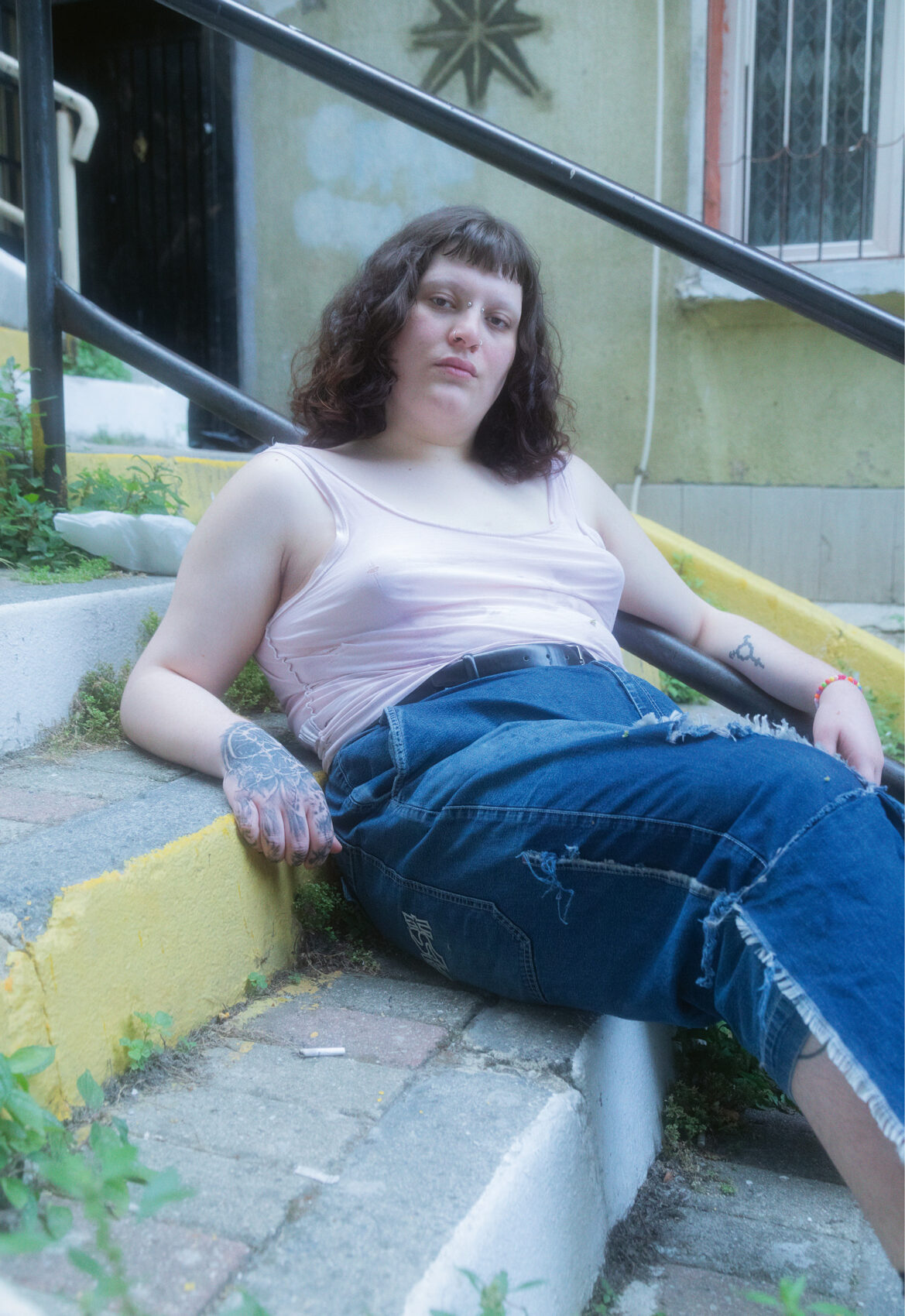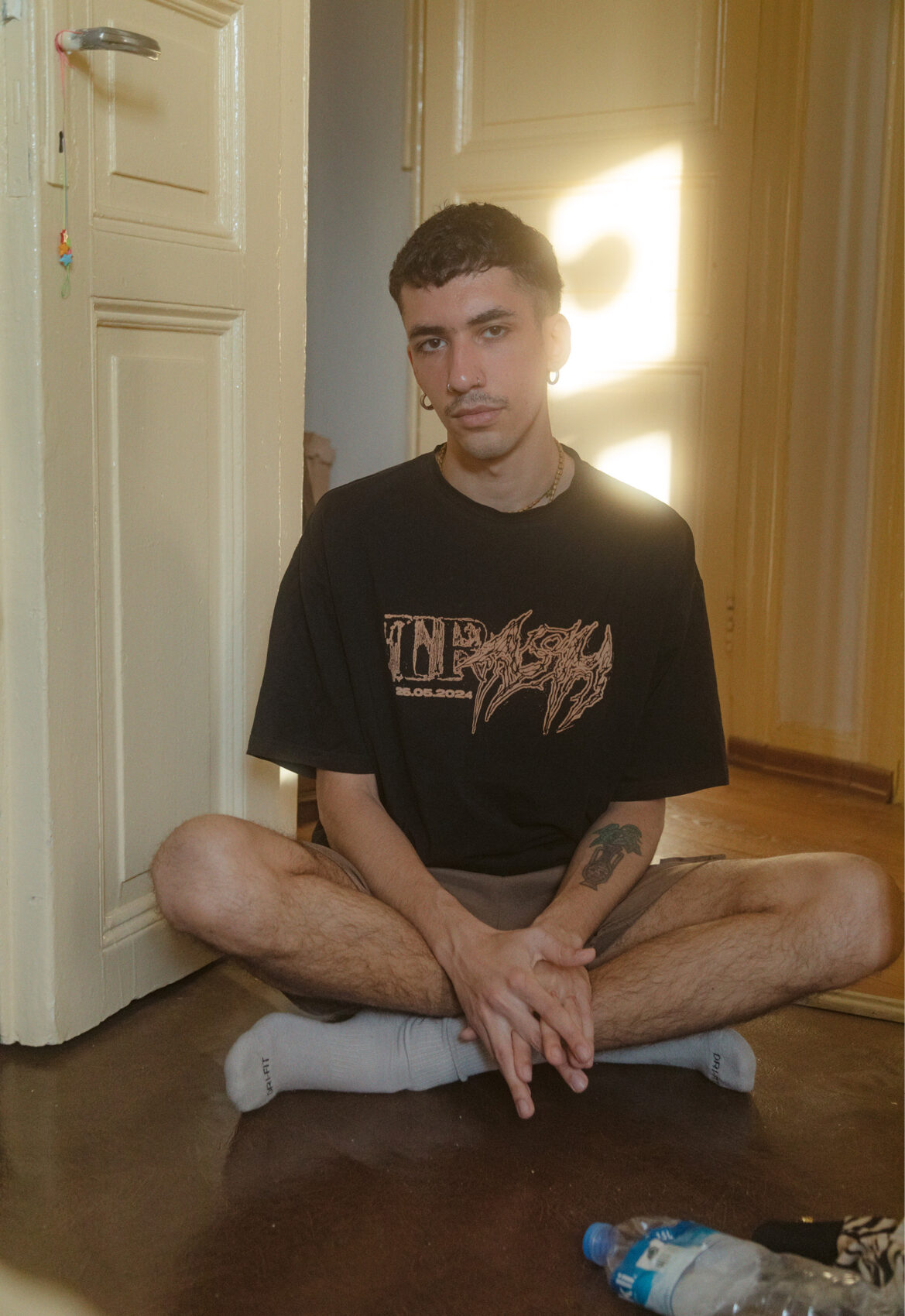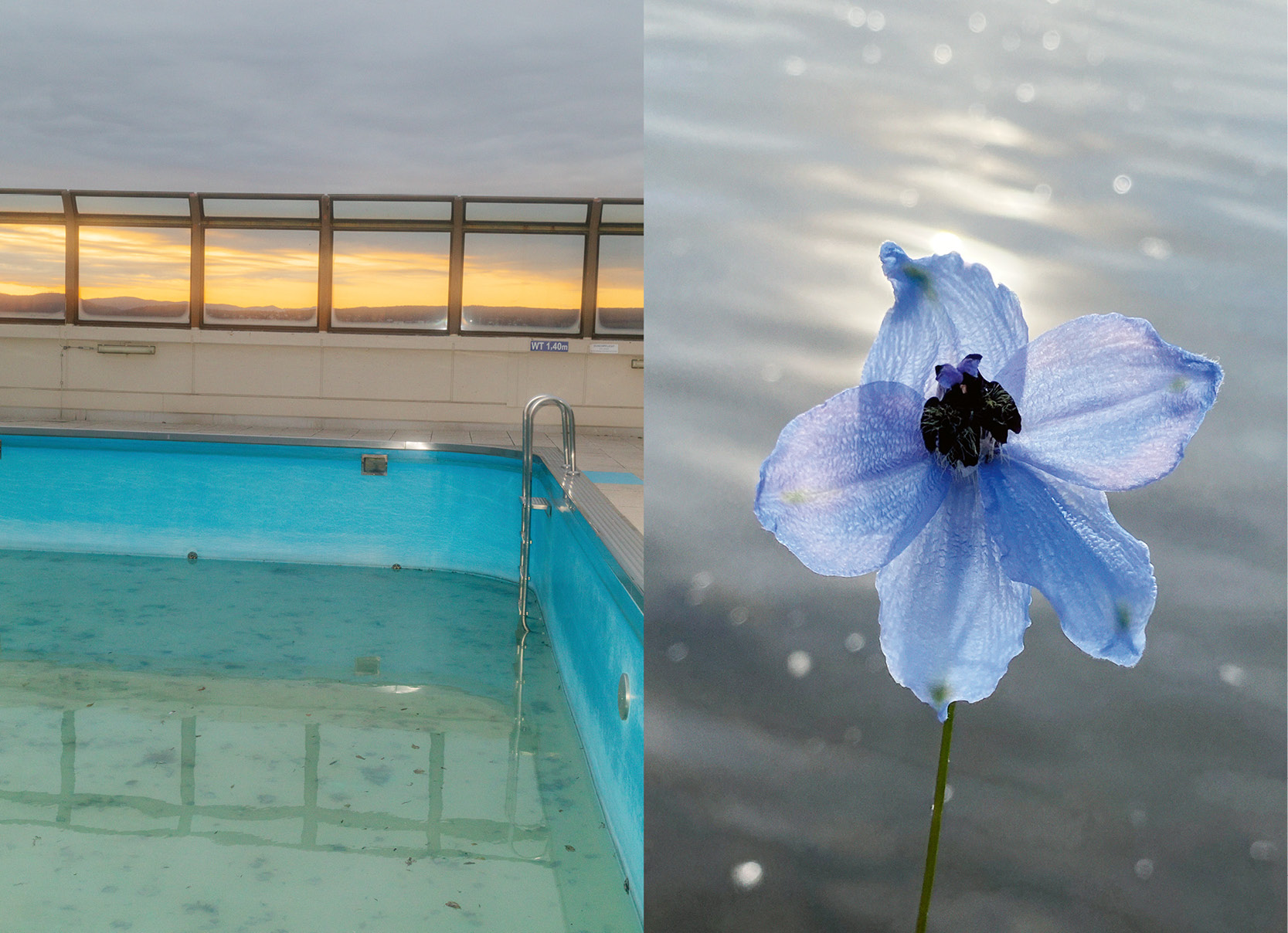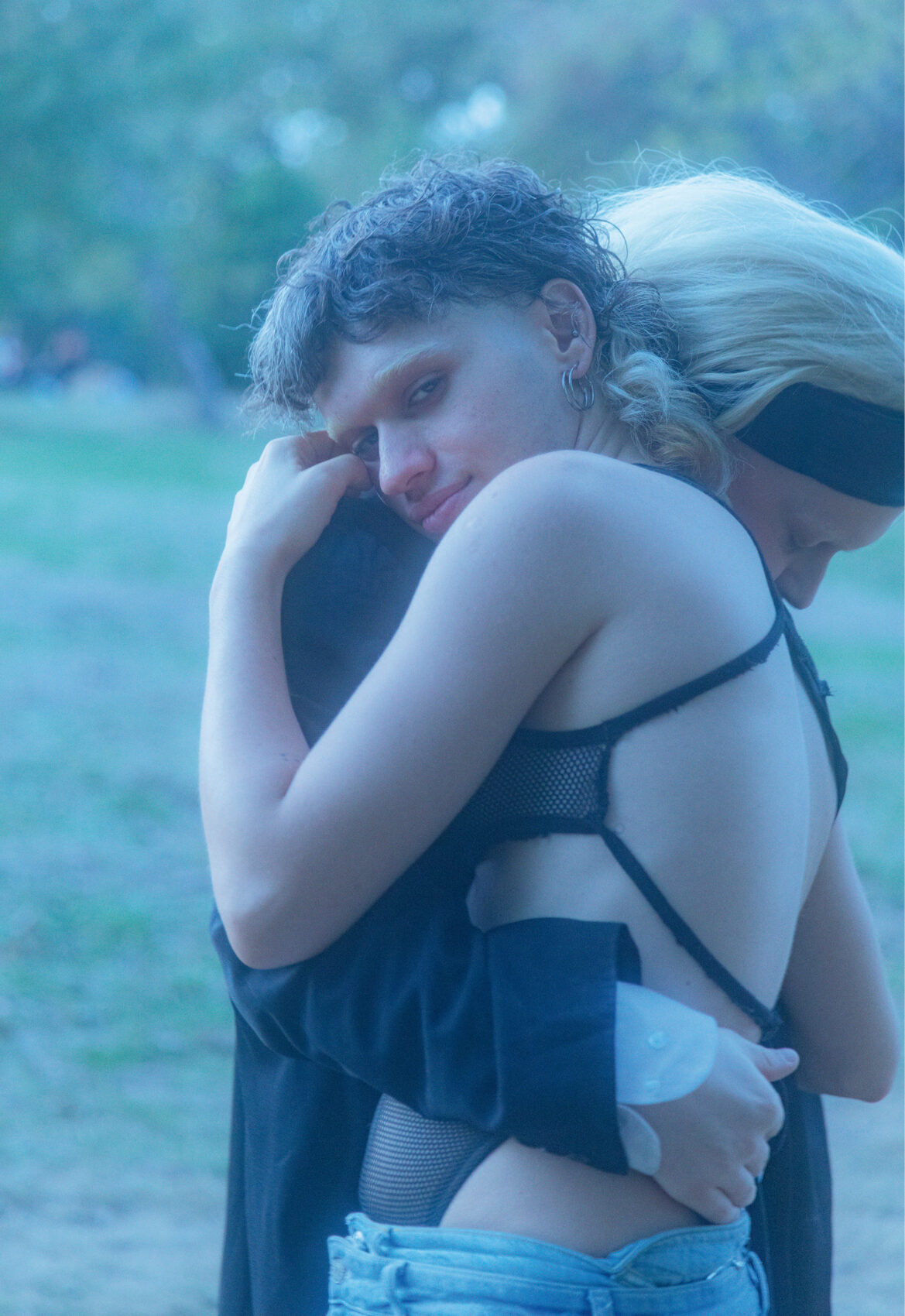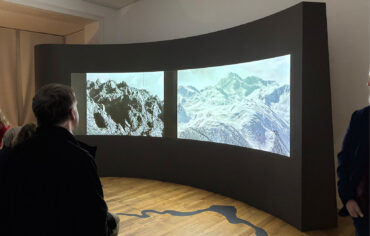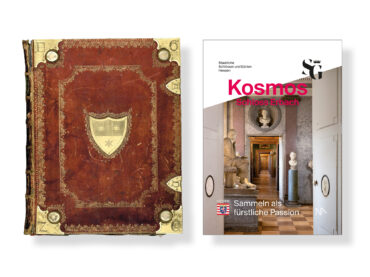Grant recipient
Neven Allgeier
Neven Allgeier Istanbul has held a very strong appeal for me for quite some time now. It started in 2018. That’s when I took my first trip for a magazine I was working for and had the fortune to portray and get to know several of the people involved in the local culture scene. Some initial friendships and connections came out of that trip—and grew stronger every time I went back. What’s more, with every visit I became more and more aware of the city’s cultural complexity, the social strata that have emerged there over centuries, and the influences exerted by very different population groups to the present.
During my stays—most recently in the framework of the residency grant—I had a lot of conversations: about political upheavals, growing economic uncertainty, a feeling of instability. There’s a tangible sense of exhaustion, and again and again it’s linked to the question of whether to stay or to leave. What fascinates me in the midst of this fragile situation is many people’s courage to create visibility and space for expression despite everything, both for themselves and for others. Non-commercial art spaces, queer clubs, and temporary collectives radiate an energy I find extremely impressive. It’s pervaded with a sense of urgency and a desire for self-determination, but also with mutual caring and solidarity.
HKST Do you see your imagery—whether it originated in Istanbul or somewhere else—more as personal reflection or more as commentary on society?
Allgeier To an extent, I think a large share of personal reflection is unavoidable in my imagery. By combining various motifs, I often even deliberately create new narratives that depart from a purely documentary approach and put the focus on subjectiveness and various interpretations.
At the same time, already in the process of choosing the portrait subjects, a joint aspect comes into play. One essential characteristic of my photographic practice is that I don’t make my choices according to any supposed importance, for example based on large social media presence or—in the case of artists I photograph—institutional presence. On the contrary, what I look for is an organic access to local structures, and I decide who to portray based on conversations and recommendations by various local people. On the one hand, this is my way of subverting my own power of decision as an outside observer and of keeping myself from taking an appropriative approach to the portrayals, especially in socio-culturally precarious contexts. On the other hand, I strive for works that convey an open conception of authorship and reflect the perspectives and thoughts of many people.
The images in their entirety no doubt contain a political statement and a clear reference to society’s developments and themes. I nevertheless make an effort not to provide the viewers with any ready-made answers, but instead to create spaces where they can find their own interpretations and meanings. It is precisely in that process that I see an opportunity to make diversity and complexity tangible with regard to a situation.
HKST You sometimes show cityscapes, landscapes, or closeups of the natural environment side by side with your portraits. With their glowing suns, diffuse lighting, and often tilted horizons, you present what could almost be called a romantically tinged, but also unsettlingly fragile world. What appeals to you about these constellations?
Allgeier I call them Environments—the unpeopled sceneries I juxtapose with the portraits. In them, I explore an ambiguity that oscillates between an almost fairy-tale-like, romanticized experience of nature on the one hand and dystopia on the other. The light atmosphere is an elementary aspect of these images. The sceneries are often flooded with light, but it’s unclear whether its main source is a rising or a setting sun. That creates a basic, emotion-charged mood as well as uncertainty as to whether something is beginning or ending. And in the sceneries that can be read as beautiful, even kitschy, at first sight, there are also frequent deliberate disconnects. These disconnects can seem accidental or harmless, but on a subliminal level they destroy the idyll and point to matters such as climate change and increasing environmental disasters.
In my publication Fading Temples (2022) and most recently the exhibition Drown in Dreams in the Nassauischer Kunstverein Wiesbaden (2024), I put portraits and Environments—the latter not shot in the same locations as the former—together to create pairs. When viewed side by side, the images detach, to an extent, from the reality of the moment captured and join to form new spaces of reality that circumvent what we generally conceive of as ‘normal’. In the interplay between the two genres, the Environments can be read—despite their aesthetic autonomy—as projection surfaces or stages for the respective protagonists.
The publication A Hole in the Sky, which I worked on during my time in Istanbul, picks up on this approach, but also departs from it. In several photographic chapters consisting of four to twenty works each, I combine portraits and Environments that can be related geographically, temporally, or situationally. As a result, they enter into comparatively direct dialogues with one another. Through this contextually based combination of the two image genres and the chapters’ clear dissociation from one another, image series come about that can be seen as film snippets or visual poems. They invite the viewers to immerse themselves in different narrative fragments.
HKST Due to their soft, atmospheric colouration, many of your photographs—whether portraits or Environments—have an almost painterly quality about them. To what extent do you take inspiration from painting?
Allgeier Painting has had a formative influence on me from the start. In my thoughts, I return again and again to the first moments in which I was touched by paintings. To this day, I am fascinated with colour composition and especially with the emotional tension of certain works. One of my earliest encounters with painting was with European Expressionism, in particular works by Edvard Munch, Max Beckmann, and Ernst Ludwig Kirchner. Their subjective view of the world and depictions of human beings in nature had a lasting impact on the way I see the world. This connection to painting has remained powerful over the years and has increasingly expanded to include works of the recent past and my own generation.
HKST In A Hole in the Sky, you combine your photographs with texts by various authors. How do image and text relate to one another?
Allgeier The photographic chapters making up A Hole in the Sky are interspersed with altogether 21 texts by 14 authors. There is no direct connection between the texts and the images—the former do not describe the latter. Rather, the link is an atmospheric one. The photos and texts have something in common in that they all revolve around a person’s, or a group of people’s, subjective view of a complex, constantly changing world. It is precisely in this fragmentation, and in the simultaneity of different voices, that I see one of the publication’s main potentials. This complexity is intended to convey connections and commonalities, but also an awareness that there can be many different answers to the same question.
To me it was important that the texts move freely between essayistic, narrative, and lyrical modes of writing. At the same time, I wanted them to emerge from different degrees of closeness to the project: Some were written by colleagues I appreciate or am friends with, others by writers with biographical relationships to the places I photographed. A number of the authors also turn up in the portraits, which, however, are not labelled accordingly.
HKST You talked about how, during your residency grant, you received new impulses which you’d like to pursue going forward, for example in terms of the light atmospheres and colours of your photographs or a less explicit staging of the portrait subject. Can you explain what you meant in more detail?
Allgeier As I touched on earlier, during the process of making A Hole in the Sky I began departing from the staged portrait situation and working from a more observational, almost documentary perspective. Many of the shots, including the individual portraits, emerged out of group situations. I’m becoming more and more interested in making these social dynamics visible, specifically with regard to body language, facial expression, and atmospheric interstices.
The spectrum has also widened technically: I now work less with flash and far more with ambient light to allow the light situations to become more fluid and ambiguous. I feel particularly drawn to a diffuse, bluish light atmosphere that is harder to pin down in terms of location and lends the images an inherent sense of openness and melancholy.
